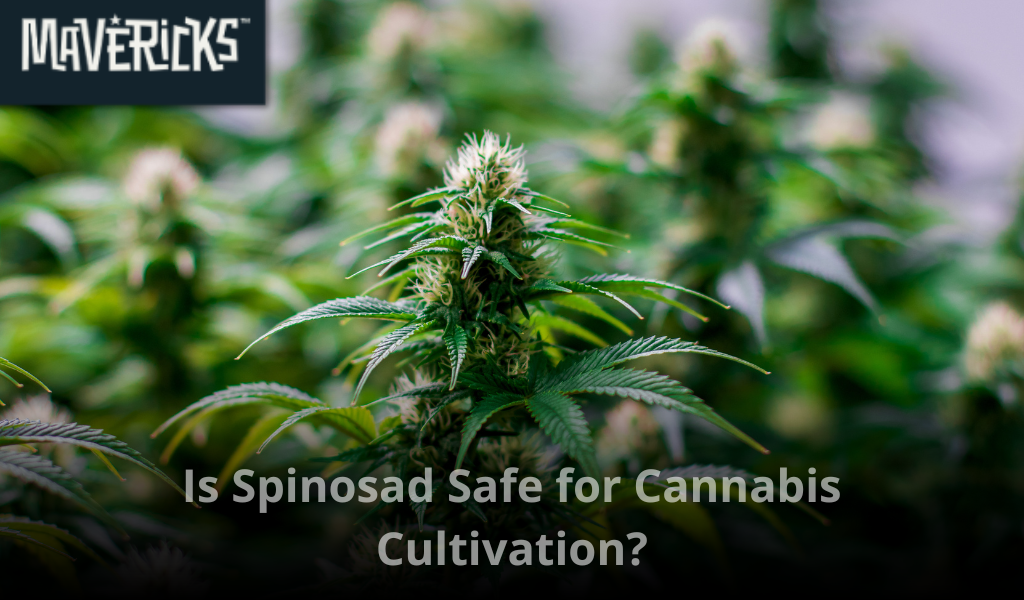When pests invade your cannabis crop—whether it's spider mites, thrips, or caterpillars—finding a reliable and safe treatment is essential. Spinosad is a popular organic insecticide widely used in agriculture, but is it safe for cannabis?
In this guide, we’ll break down what Spinosad is, how it works, when to use it, and what cannabis cultivators need to know before applying it—especially if you’re working with elite genetics like those from Mavericks Genetics USA.
What is Spinosad?
Spinosad is a biological insecticide derived from the fermentation of a naturally occurring soil bacterium called Saccharopolyspora spinosa. It’s approved for organic farming and used on a variety of crops—including fruits, vegetables, and ornamental plants.
It works by attacking the nervous systems of soft-bodied insects like:
-
Thrips
-
Spider mites
-
Caterpillars
-
Leaf miners
-
Fungus gnats
Spinosad causes hyperexcitation of insect neurons, leading to paralysis and death within 24–48 hours.
Is Spinosad safe for cannabis?
Generally, yes—but with caveats.
Spinosad is considered safe for cannabis during the vegetative stage and early flowering, especially when used properly. It's non-toxic to humans and animals and breaks down quickly in sunlight, making it a low-residue treatment.
However, many growers avoid using it during late flowering, since spraying buds with any liquid—even an organic one—can lead to:
-
Mold or bud rot
-
Residue in the final product
-
Terpene degradation
Pros and cons of Spinosad for cannabis
|
Pros |
Cons |
|
Organic and OMRI-listed |
Not effective on all pests |
|
Safe for humans, pets, and beneficial insects |
Cannot be used in some states (e.g. California) |
|
Fast-acting with minimal resistance issues |
Should not be applied on mature buds |
|
Works systemically (partially absorbed) |
May require multiple applications |
When to use Spinosad on cannabis
Spinosad is most effective when:
-
Pests like thrips or spider mites are first detected
-
You’re still in veg or early bloom
-
Humidity is controlled and you can dry leaves quickly
-
You're doing preventive IPM (integrated pest management)
Avoid spraying during the last 3–4 weeks of flowering, as any moisture on buds increases the risk of mold.
How to apply Spinosad
-
Dilute according to instructions
Most products recommend 2–4 tablespoons per gallon of water. -
Spray the undersides of leaves
Focus on shaded areas where pests hide. -
Apply at lights-off or dusk
Avoid spraying under strong lights to reduce plant stress and evaporation issues. -
Reapply every 5–7 days if needed
Use up to 3 applications in a cycle, then rotate with another pest control agent to prevent resistance.
Spinosad alternatives for cannabis
Looking for a more targeted or late-flower-safe option? Consider:
|
Alternative |
Best For |
Safe on Buds? |
|
Neem Oil |
Veg pests like aphids, whiteflies |
No |
|
Insecticidal Soap |
Soft-bodied insects |
No |
|
Beneficial Insects (ladybugs, lacewings) |
Long-term prevention |
Yes |
|
BT (Bacillus thuringiensis) |
Caterpillars |
Yes |
|
Sulfur Spray |
Powdery mildew, mites (veg only) |
No |
|
Lost Coast Plant Therapy / Mammoth CannControl |
All-natural, safe ingredients |
Yes |
Always read the label and avoid mixing multiple sprays unless directed.
Is Spinosad allowed in your state?
Some U.S. states—like California—have restricted the use of Spinosad on commercial cannabis due to regulatory changes. Even if it's organic, it may not be compliant in licensed cultivation settings.
Can you use Spinosad on clones and seedlings?
Yes. In fact, Spinosad is often used on young plants and clones to prevent early pest infestations. Use a light dilution, and never saturate the root zone.
Will Spinosad affect the flavor or smell of buds?
Only if applied too late. When used correctly:
-
During veg or early bloom
-
At least 4+ weeks before harvest
-
With proper rinsing and drying afterward
…you should not notice any impact on flavor, aroma, or terpene profile.
How to rinse cannabis plants after Spinosad
If you apply Spinosad past week 4 of flowering (not recommended), perform a bud rinse at harvest:
-
Fill a bucket with water + lemon juice + baking soda
-
Submerge each bud and gently agitate
-
Rinse in clean water and hang to dry
But again: avoid spraying during mid-to-late flower if possible.
Final thoughts: Is Spinosad safe for cannabis?
Yes, Spinosad is a powerful organic tool in your cannabis pest control arsenal—especially when used early, wisely, and within legal guidelines. It’s not a silver bullet, but as part of a larger IPM strategy, it can help keep your plants clean and thriving.
Pro tip: Don’t wait until pests take over. Be proactive, rotate treatments, and monitor your crop daily—especially if you're working with high-performance genetics like those at Mavericks Genetics USA.
Need pest-resistant strains for your next grow?
Explore our feminized seed collection at Mavericks Genetics USA and find elite genetics bred for resilience, vigor, and yield.

Share:
Indoor vs Outdoor Weed: Differences, Pros, and Cons
Major Cannabis Terpenes and Terpene Chart: Understanding the Aromatic Soul of Cannabis